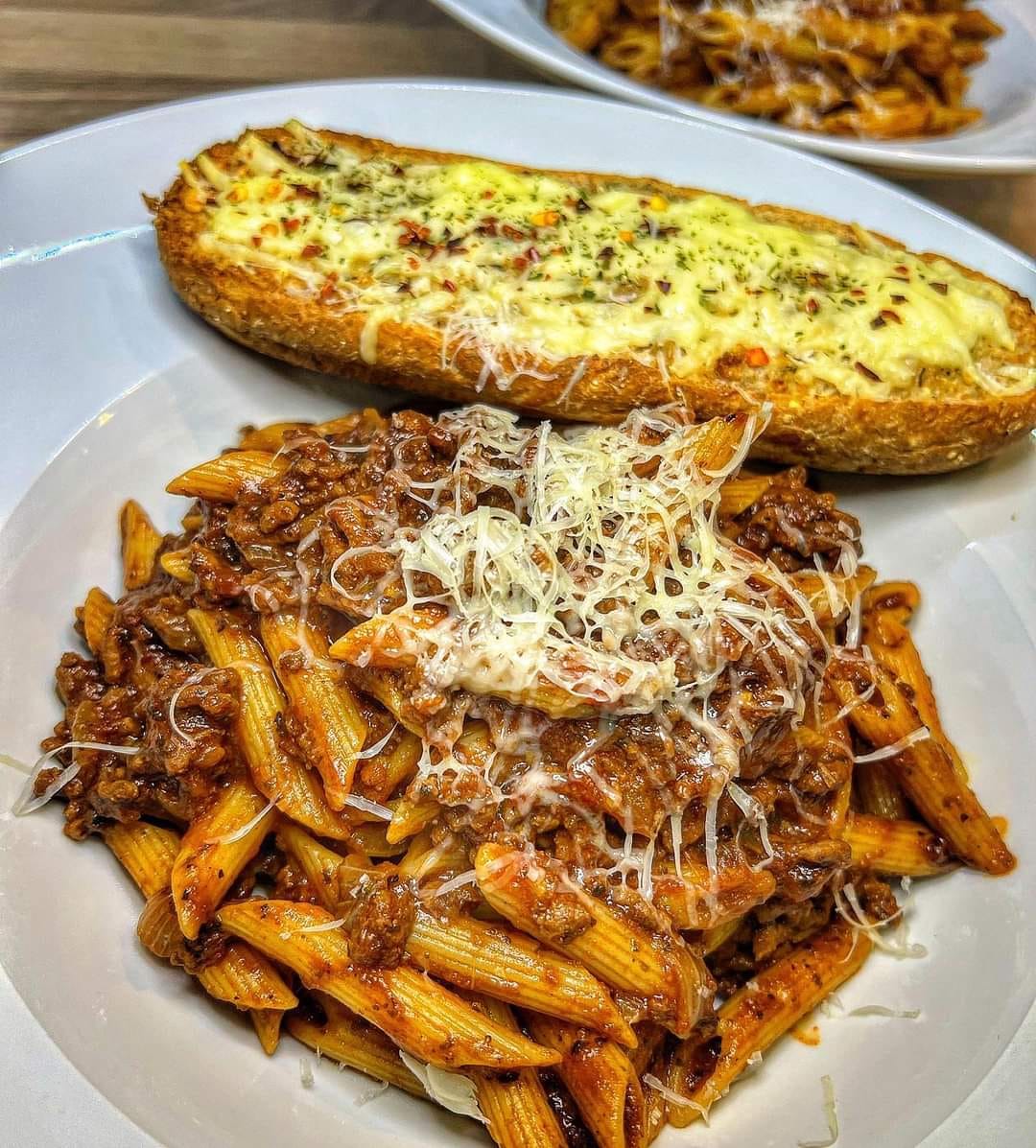ADVERTISEMENT
# **Penne Bolognese: A Timeless Classic with a Twist**
Penne Bolognese is a hearty and flavorful Italian dish that has captured the hearts of food lovers worldwide. With its rich, meaty sauce, perfectly cooked penne pasta, and the comforting essence of slow-simmered flavors, Penne Bolognese is the kind of meal that can make any dinner feel like an occasion. Whether you are preparing a family meal, hosting friends, or just craving a delicious, filling dish, Penne Bolognese is a timeless choice.
In this article, we will delve into the origins of Bolognese sauce, explore the history behind this beloved dish, provide a detailed recipe, and offer tips on how to make the perfect Penne Bolognese. Along the way, we’ll also explore the various ways you can customize and elevate this dish to suit your tastes. So, let’s get started!
## **What is Penne Bolognese?**
Penne Bolognese is a variation of the classic **Ragù alla Bolognese**, an iconic Italian meat sauce that originates from Bologna, Italy. Traditionally, Ragù alla Bolognese is a meat-based sauce prepared by simmering ground beef, pork, or veal with onions, carrots, celery, tomatoes, and wine. The sauce is then slow-cooked to allow the flavors to meld together and create a rich, savory mixture.
While the traditional Bolognese sauce is usually served with wide pasta, such as tagliatelle or pappardelle, the Penne Bolognese swaps in penne pasta – a popular Italian pasta shape with a tube-like appearance, which is perfect for trapping sauces within its ridges. This version combines the traditional Bolognese sauce with penne, creating a dish that has become a favorite in many households around the world.
It’s a dish that perfectly balances richness and flavor, and it is often served with grated Parmesan cheese or a sprinkle of fresh basil for extra taste and garnish.
## **The History of Bolognese Sauce**
Before diving into the recipe for Penne Bolognese, it’s important to understand the origins of its core component: **Bolognese sauce**. While the dish may seem ubiquitous today, it has a fascinating and nuanced history that dates back to the late 18th century.
The origin of Ragù alla Bolognese is often attributed to Imola, a town near Bologna, Italy. According to food historians, the dish was first created by a chef named **Francesco Barbetti** in the late 1700s. The original recipe, however, was quite different from what we know today. Early versions of Bolognese sauce were made with lean cuts of veal and a small amount of butter, and tomatoes were not initially used as the base ingredient.
As the recipe evolved over time, particularly in the early 20th century, **Tommaso Bolognese**, a chef from Bologna, made adjustments by adding ground beef, pork, and a mix of vegetables. It wasn’t until the late 19th century that the sauce began to resemble the dish we recognize today.
The classic version of Ragù alla Bolognese includes finely chopped vegetables (such as carrots, celery, and onions), ground meat (usually a combination of beef and pork), and ingredients like white wine, butter, and a touch of milk or cream. The sauce is traditionally simmered for several hours to deepen its flavor and create a rich, hearty base that pairs perfectly with fresh pasta.
However, with time, different regions and families began to put their own spin on the dish, incorporating various types of meat, different pasta shapes, and even regional variations of the sauce. Today, Bolognese sauce is loved worldwide and has inspired numerous adaptations, including the popular Penne Bolognese.
## **Ingredients for Penne Bolognese**
The ingredients for Penne Bolognese are simple yet full of flavor. To create a delicious, authentic Bolognese sauce that pairs perfectly with penne, you’ll need the following ingredients:
### **For the Bolognese Sauce:**
– **Olive oil (2 tablespoons)** – A staple in Italian cooking that provides a rich base for sautéing vegetables and meat.
– **Ground beef (1 pound)** – The primary meat for the Bolognese sauce. Ground beef offers a rich, meaty texture and deep flavor when browned and simmered.
– **Ground pork (½ pound)** – Adding ground pork to the beef adds richness and a subtle sweetness to the sauce.
– **Onion (1 medium, finely chopped)** – A classic base vegetable that provides aromatic sweetness when sautéed.
– **Carrots (2 medium, finely chopped)** – Carrots add natural sweetness and depth to the sauce.
– **Celery stalks (2, finely chopped)** – Celery adds freshness and balance to the sauce.
– **Garlic cloves (4, minced)** – Garlic provides a fragrant, savory element that enhances the depth of flavor in the sauce.
– **Crushed tomatoes (1 can, 14.5 oz)** – The primary base for the sauce, contributing acidity and a rich tomato flavor.
– **Tomato paste (2 tablespoons)** – Concentrated tomato flavor that deepens the sauce.
– **Red wine (1 cup)** – Red wine adds acidity and depth, enhancing the richness of the meat sauce.
– **Whole milk or heavy cream (½ cup)** – The addition of milk or cream helps mellow out the acidity of the tomatoes and creates a smooth, velvety sauce.
– **Salt and pepper (to taste)** – Season the sauce to bring out all the flavors.
– **Fresh herbs (a handful of basil, oregano, or thyme)** – Fresh herbs brighten the sauce with added fragrance and taste.
### **For the Penne Pasta:**
– **Penne pasta (1 pound)** – A medium-sized pasta with a tube-like shape that is perfect for absorbing the Bolognese sauce.
– **Salt (for pasta water)** – Salting the water ensures that the pasta is flavorful.
**For Garnish:**
– **Grated Parmesan cheese** – A classic topping that adds a salty, umami-rich element to the dish.
– **Fresh basil leaves (optional)** – Fresh basil adds a touch of color and fresh flavor.
For Complete Cooking STEPS Please Head On Over To Next Page Or Open button (>) and don’t forget to SHARE with your Facebook friends
